Benin Art And Architecture - Culture (3) - Nairaland
Nairaland Forum / Nairaland / General / Culture / Benin Art And Architecture (211822 Views)
Art And Architecture Of The Igbo People / The Art And Architecture Of Yorubaland! / Show Pictures Of Africas Art And Archaeological Treasures (2) (3) (4)
(1) (2) (3) (4) (5) (6) (7) (8) (9) (10) ... (25) (Reply) (Go Down)
| Re: Benin Art And Architecture by PhysicsHD: 12:49am On Jan 10, 2011 |
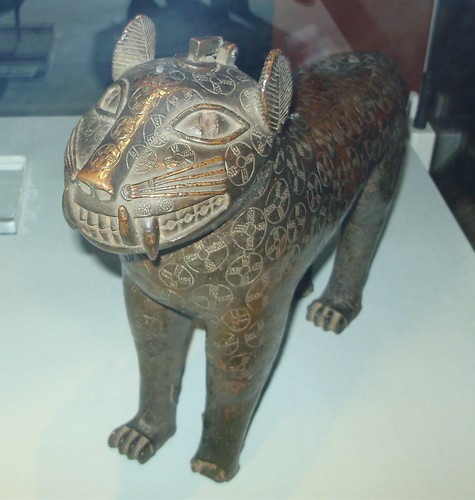 "cat water holder It's Benin bronze and from the 14th century. Basically there is a hinge on the back of the cats head, which can be opened up to pour water inside. If you want to pour water out, then the water comes out the cats nostrils." |
| Re: Benin Art And Architecture by honeric01(m): 2:01am On Jan 10, 2011 |
Nice one bro, i am so proud looking at all these artifacts, so much art work from the great Bini Kingdom.    1 Like |
| Re: Benin Art And Architecture by Akhenaten: 4:32am On Jan 10, 2011 |
Such a rich cultural history. I'll be lying to say that I am not jealous of the Benin Empire. The sophistication of that kingdom is truly amazing. |
| Re: Benin Art And Architecture by AndreUweh(m): 11:50am On Jan 10, 2011 |
What attempts are Edo people in Diaspora and Edo state govt making to retrieve this treasures?. |
| Re: Benin Art And Architecture by PhysicsMHD(m): 7:01am On Jan 12, 2011 |
FACE: There already is a museum in Benin city, but in my personal opinion the very best works are all outside of Nigeria. The issue of returning the works from museums has been going on for a while but not that much progress was really made beyond getting those now in Benin. And I think there are only one or two original buildings that were spared burning/still standing. Those are restored. And several palaces and buildings were rebuilt based on knowledge of those who were familiar with them before the invasion. The Oba's palace was rebuilt but it is only a third or fourth of the size of the 1897 palace, and even the 1897 palace was smaller than the size of the palace in the 1600s, before much of it was burnt down in a civil war in earlier times. |
| Re: Benin Art And Architecture by PhysicsMHD(m): 7:21am On Jan 12, 2011 |
More photos found at the facebook group "THE IMPERIAL ARCHITECTURE OF GREAT BENIN" by Enosakhare Idubor:  "A Massive door that leads to a long corridor at the Eguae Oba N'Edo(Royal Palace of Benin)"  Picture from 1897 showing part of the palace interior and showing carved ivory tusks.  An 1897 picture of one of the courtyards of the royal palace.  A part of the external part of the Oba of Benin's Palace before it was destroyed.  A photo of one of the undamaged/un-eroded Benin iya (fortifications) |
| Re: Benin Art And Architecture by PhysicsMHD(m): 9:09am On Jan 12, 2011 |
From that same facebook group:  A courtyard at the Oba's Palace in Benin (the rebuilt palace)  The front of the Isekhure of Benin's Palace  "One of the special forms of decorating a floor in Benin is an embedded floor with cowrie shells, a pre-colonial type of currency.This design is of an Oba with mudfish legs holding crocodiles."  Entrance to the rebuilt Oba's palace in Benin.  "A courtyard or Ote-eghodo at Ogiamien's palace,the only building that was spared the barbaric burning and looting of Great Benin in 1897 by the British."  "A Temple at Chief Ogiamien's Palace.Please Note aspects of the wall which are unique to Great Benin." |
| Re: Benin Art And Architecture by PhysicsMHD(m): 9:13am On Jan 12, 2011 |
  A building part and parcel of a Chief's Palace. "A courtyard in a Chief's Palace photographed in 1897 by R.K.Granvile.Architecture is one way of marking elite status.Chiefs own large compounds,the exterior walls of which are decorated with horizontal ridge designs(Agben).Formerly,clay bas-relief designs of animals,warriors, and other symbols of power were an important decoration,but today this is rarely found."- Paula Girshick Ben-Amos |
| Re: Benin Art And Architecture by PhysicsMHD(m): 9:23am On Jan 12, 2011 |
 "Ugha Ozolua Ni Baromi Eko (Ozolua Ni baromi Eko's Temple) at the Royal Palace Benin-City. Great Benin's Coat of arms at the Top of the Temple.Elephant on the right and leopard on the left,both of them holding Ada and Eben." |
| Re: Benin Art And Architecture by PhysicsMHD(m): 1:41am On Jan 16, 2011 |
[img]http://www.artic.edu/aic/collections/citi/images/standard/Exhib/EX_000001/96450_520251.jpg[/img] Edo Benin Kingdom, Nigeria Oba Ovonramwen's Stool (Agba), Late 19th century Wood, mirror, and brass nails 39.5 x 62.5 x 33 cm (15 1/2 x 24 5/8 x 13 in.) The Trustees of the British Museum, London, Af1898,0630.2 According to the notes of Ernst Roupell, the member of the British military force who took possession of this stool in Benin, Oba Ovonramwen was sitting on it when he was sentenced to exile by a military tribunal in September 1898. The stool is heavily embellished with bas-relief images that evoke the oba's wealth through trade. At center, the oba is portrayed in coral regalia and he raises an eben sword. In a boat to the side, a European man holds a saber. Barrels for transporting palm oil, Benin’s major commodity at the time, are portrayed around the figures. |
| Re: Benin Art And Architecture by PhysicsMHD(m): 2:29am On Jan 16, 2011 |
[img]http://www.artic.edu/aic/collections/citi/images/standard/Exhib/EX_000001/100199_519833.jpg[/img] Edo Benin Kingdom, Nigeria Altar Group (Aseberia) with an Iyoba and Attendants, 17th/18th century Brass 33 x 30.5 x 23.5 cm (13 x 12 x 9 1/4 in.) © The Trustees of the National Museums of Scotland, A1898.380 In Benin the practice of creating figural groupings for royal altars dates to the 17th century. This altar group was made for an iyoba's altar and shows her at the center back, wearing a coral-beaded cap over her distinguishing “chicken’s beak” hairstyle. Flanking her are female attendants who hold aloft mirrored charms, which act as gateways into the otherworld. Warriors and ewua officials, each important members of the iyoba’s court, are also in the procession. Two leopards, symbols of the oba’s power, stand at the front. |
| Re: Benin Art And Architecture by PhysicsMHD(m): 2:30am On Jan 16, 2011 |
[img]http://www.artic.edu/aic/collections/citi/images/standard/Exhib/EX_000001/96457_520259.jpg[/img] Edo Benin Kingdom, Nigeria Oba's Crown (Erhu Ede), 18th/19th century Coral, agate, and copper H. 15 cm (5 7/8 in.) The Trustees of the British Museum, London, Af1898,0630.5 Mediterranean coral was among the earliest commodities brought to Benin by Portuguese merchants in the late 15th century. Coral’s hard surface and deep red color appealed to the already established Edo appreciation for red stones such as agate and jasper, which had long been imported from North Africa and made into beads. When worn in abundance, coral regalia make a spectacular impression. Netted garments such as shirts, aprons, skirts, and even full-length robes are worn over white cloth. Crowns may be simple in design, like this cap, or more highly elaborate. The oba's beaded regalia also include collars, bracelets, sashes, belts, anklets, and shoes. |
| Re: Benin Art And Architecture by PhysicsMHD(m): 3:09am On Jan 16, 2011 |
[img]http://www.artic.edu/aic/collections/citi/images/standard/WebLarge/WebImg_000058/4500_534675.jpg[/img] Edo, Court of Benin Nigeria Oba's Altar Tusk, 1850/1888 Ivory 150.5 x 195.6 x 12.7 cm (59 1/4 x 77 x 5 in.) Gift of Mr. and Mrs. Edwin Hokin, 1976.523 Ivory's white color evokes spiritual harmony for the Edo; thus, its presence enhances an altar's sanctity. Ivory’s important role as a commodity controlled by the oba also made it attractive for use on royal altars. Since the 18th century, oba’s altars have been embellished with matched pairs of carved elephant tusks, reflecting the increase in ivory’s value at that time. The tusks were anchored on brass commemorative heads. Oba Adolo commissioned this tusk in the mid-19th century for the altar of his father, Oba Osemwende. The iconography, which prominently features the fish-legged oba motif, honors the 15th-century ruler Oba Ewuare. |
| Re: Benin Art And Architecture by PhysicsMHD(m): 3:19am On Jan 16, 2011 |
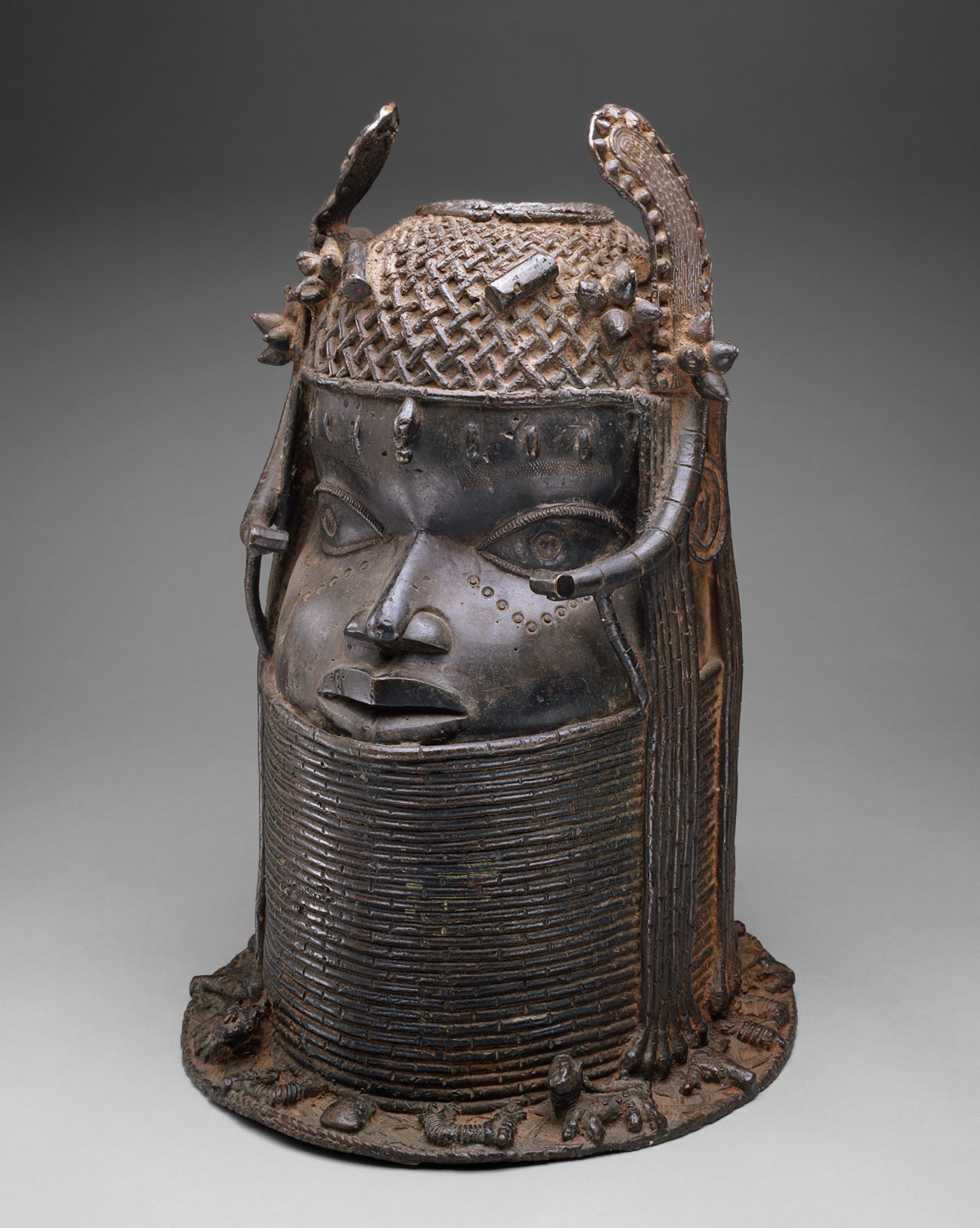 Head of an Oba (King), 19th century Nigeria; Edo peoples, court of Benin Brass, iron H. 18 in. (45.7 cm) Gift of Mr. and Mrs. Klaus G. Perls, 1991 (1991.17.3) This example of a brass casting of a Benin head may date to the mid-nineteenth century. The extreme degree of stylization, swollen cheeks and enlarged eyes, the size of the flange at the base, the weight of the casting, and the winglike projections attached to the crowns are characteristic of brass casting during this later period of Benin royal court. Source: Head of an Oba (King) [Nigeria; Edo peoples, court of Benin] (1991.17.3) | Heilbrunn Timeline of Art History | The Metropolitan Museum of Art |
| Re: Benin Art And Architecture by PhysicsMHD(m): 3:20am On Jan 16, 2011 |
[img]http://www.metmuseum.org/toah/images/h2/h2_1991.17.80,81.jpg[/img] Bracelets: Crocodile Heads, 17th–19th century Nigeria; Edo peoples, court of Benin Brass, gilt L. 5 1/4 in. (13.34 cm) Gift of Mr. and Mrs. Klaus G. Perls, 1991 (1991.17.80, 81) The oba and chiefs of Benin wear pairs of ornate bracelets at palace festivals. Long and cylindrical, these cufflike ornaments may be made of either ivory or brass and display imagery reflecting the exalted status of their bearers. The spiral bands of incised, crosshatched half-ovals and dotted lines, set within raised, striated borders, terminate at either end in elongated crocodile heads. The artist has taken great care to evoke the appearance and character of these animals. Perpendicular lines along the snouts, as well as rows of bumps on the forehead, suggest the distinctive texture of crocodile skin, while the close-set eyes with contrasting pupils evoke the watchful gaze of this dangerous animal. The depictions of crocodiles, as with other forms of aquatic imagery, associates the ruler with Olokun, god of the sea. The ocean was conceived of as a major source of wealth and prosperity for the Benin kingdom, which benefited from overseas trade with Portugal and other European powers. A realm of unfathomable depths, it also served as a metaphor for the vast, hidden powers of the ruler. The surfaces of these bracelets are covered with a thin layer of gold, an unusual feature within a courtly tradition that rarely employed this precious metal. It is unclear when, or even if, the technique of gilding was introduced to Benin's brasscasters. Some scholars have suggested that a resident European craftsman may have been responsible for gilding these and other items at the court. Source: Bracelets: Crocodile Heads [Nigeria; Edo peoples, court of Benin] (1991.17.80,81) | Heilbrunn Timeline of Art History | The Metropolitan Museum of Art |
| Re: Benin Art And Architecture by PhysicsMHD(m): 3:22am On Jan 16, 2011 |
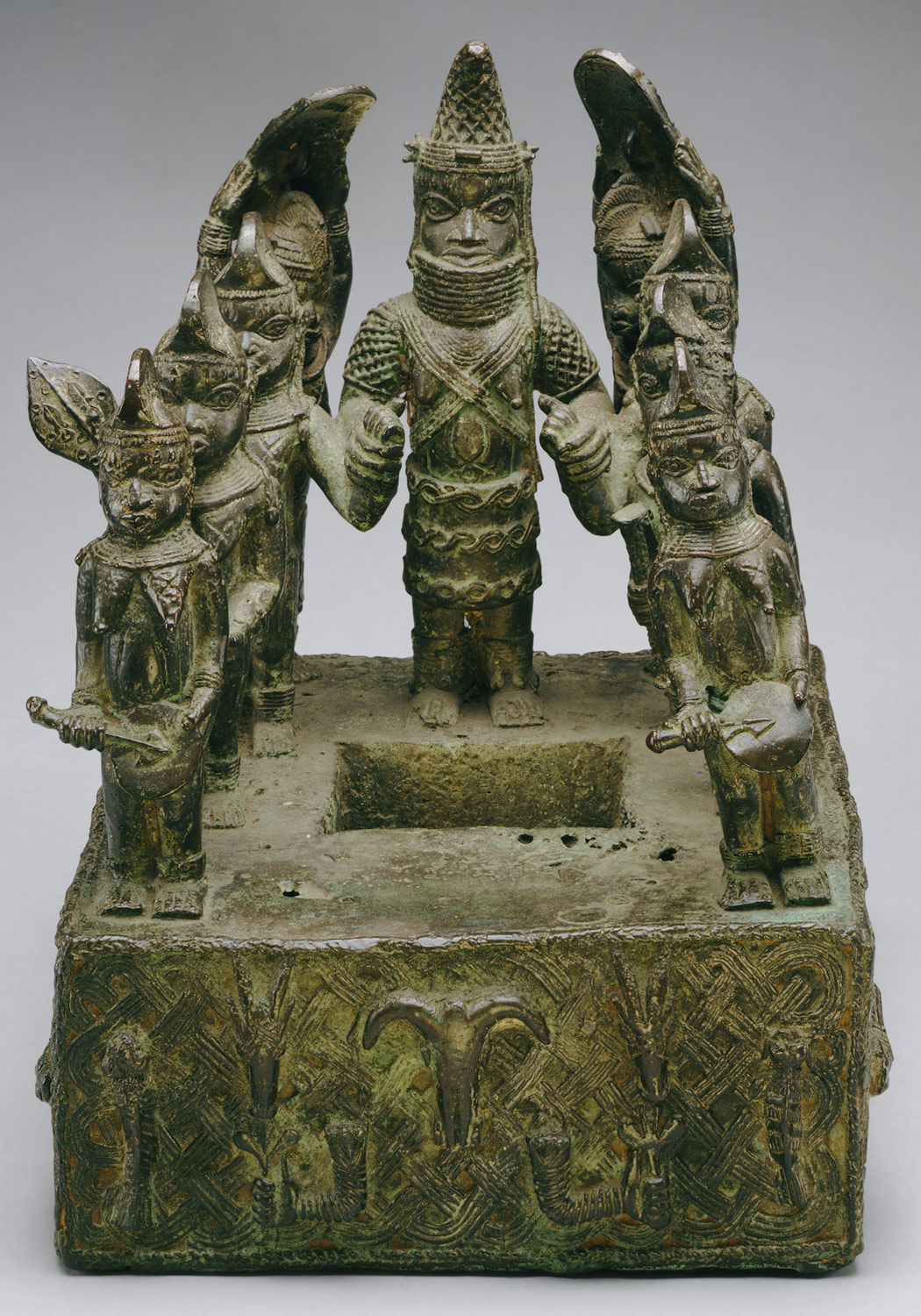   Altar Tableau: Queen Mother and Attendants, 18th century Nigeria; Edo peoples, court of Benin Brass H. 13 1/2 in. (34.29 cm) Gift of Mr. and Mrs. Klaus G. Perls, 1991 (1991.17.111) This cast brass tableau, or urhoto, was originally displayed on an ancestral altar dedicated to the mother of a ruler of the Benin kingdom. The queen mother, or iyoba, occupies an important place within the political hierarchy of the Benin court. By protecting the health and well-being of her son, she helps to safeguard the security and prosperity of the entire kingdom. In light of her position, she is entitled to certain prerogatives enjoyed by high-ranking male titleholders, such as a luxurious palace, a coterie of attendants, and the right to commission sculpture in ivory and brass. After her death, a large altar dedicated to her memory is constructed within the palace and decorated with an assemblage of sculptures that celebrate her achievements and facilitate communication with her spirit in the afterlife. This urhoto is composed of nine figures upon a rectangular base with a square opening at the center. Motifs referring to her strength and achievements such as mudfish and elephant trunks with hands holding leaves, and those of sacrificial offerings in the form of goat and ram heads, appear on the sides of the base superimposed over an interlace pattern. Above, the iyoba is shown surrounded by a group of eight female servants. Similar to other examples of royal art from Benin, the iyoba's superior rank is communicated through her greater scale and the detailed depiction of coral bead regalia. She wears the peaked crown traditionally associated with her position, as well as a cylindrical collar, netted shirt, and crossed bandoliers worn by high-ranking chiefs. The female attendants who surround the iyoba carry insignia of the iyoba's importance, including circular fans and a sword and staff of authority. Two young women stand on either side of the queen mother to support her arms, an arrangement also assumed by the king when appearing in state. Behind her, a pair of attendants hold shields above her head to protect her from the sun. The unique crested hairstyle and abundant coral ornaments found on the attendants mark them as women destined for marriage to the king or other major political figures. Raised in the palace by the iyoba herself, their sophistication and education make them valuable partners for powerful courtiers. Source: Altar Tableau: Queen Mother and Attendants [Nigeria; Edo peoples, court of Benin] (1991.17.111) | Heilbrunn Timeline of Art History | The Metropolitan Museum of Art |
| Re: Benin Art And Architecture by PhysicsMHD(m): 3:49am On Jan 16, 2011 |
 Rattle Staff (Ukhurhe) of Oba Akenzua I, 1725–50 Nigeria; Edo peoples, court of Benin Bronze, copper, iron H. 63 1/2 in. (161.3 cm) Ann and George Blumenthal Fund, 1974 (1974.5) In the Benin kingdom of southern Nigeria, rattle staffs, or ukhurhe, are an essential feature of Benin ancestral altars, whether for kings, chiefs, or commoners. These staffs have a hollow rattle chamber near the summit, and they are shaken while uttering prayers at the altars to attract the attention of the ancestors. Ukhurhe may be made of wood or brass, although the brass examples are found only on royal altars. This staff was created to memorialize Akenzua I, an oba (king) who ruled the Benin kingdom in the early eighteenth century. A rebel chief called Iyase n'Ode challenged Akenzua's reign and civil war ensued. With the help of his military commander, or ezomo, Akenzua ultimately emerged victorious, and the iconography displayed on this ukhurhe refers to this military triumph. In Benin, elephants are a traditional symbol of chiefdom and, according to Benin oral literature, Iyase n'Ode had the ability to change himself into an elephant to vanquish his enemies. Here, Oba Akenzua stands triumphantly on an elephant holding a miniature ukhurhe and a stone axe head, an object associated with warfare and death. Leopards, the preeminent symbol of royalty in Benin art, flank the elephant on either side to suggest the oba's ability to regulate the power of his chiefs. Swords of authority called eben appear in relief along the shaft of the ukhurhe, and toward the bottom a crocodile, representative of the water deity Olokun, indicates the importance of overseas trade to the prosperity of Akenzua's kingdom. At the base of the staff, a second elephant most likely represents the ezomo; his trunk ends in a human hand holding medicinal leaves, a motif in Benin art representing victory and power. Source: Rattle Staff (Ukhurhe) of Oba Akenzua I [Nigeria; Edo peoples, court of Benin] (1974.5) | Heilbrunn Timeline of Art History | The Metropolitan Museum of Art |
| Re: Benin Art And Architecture by PhysicsMHD(m): 3:51am On Jan 16, 2011 |
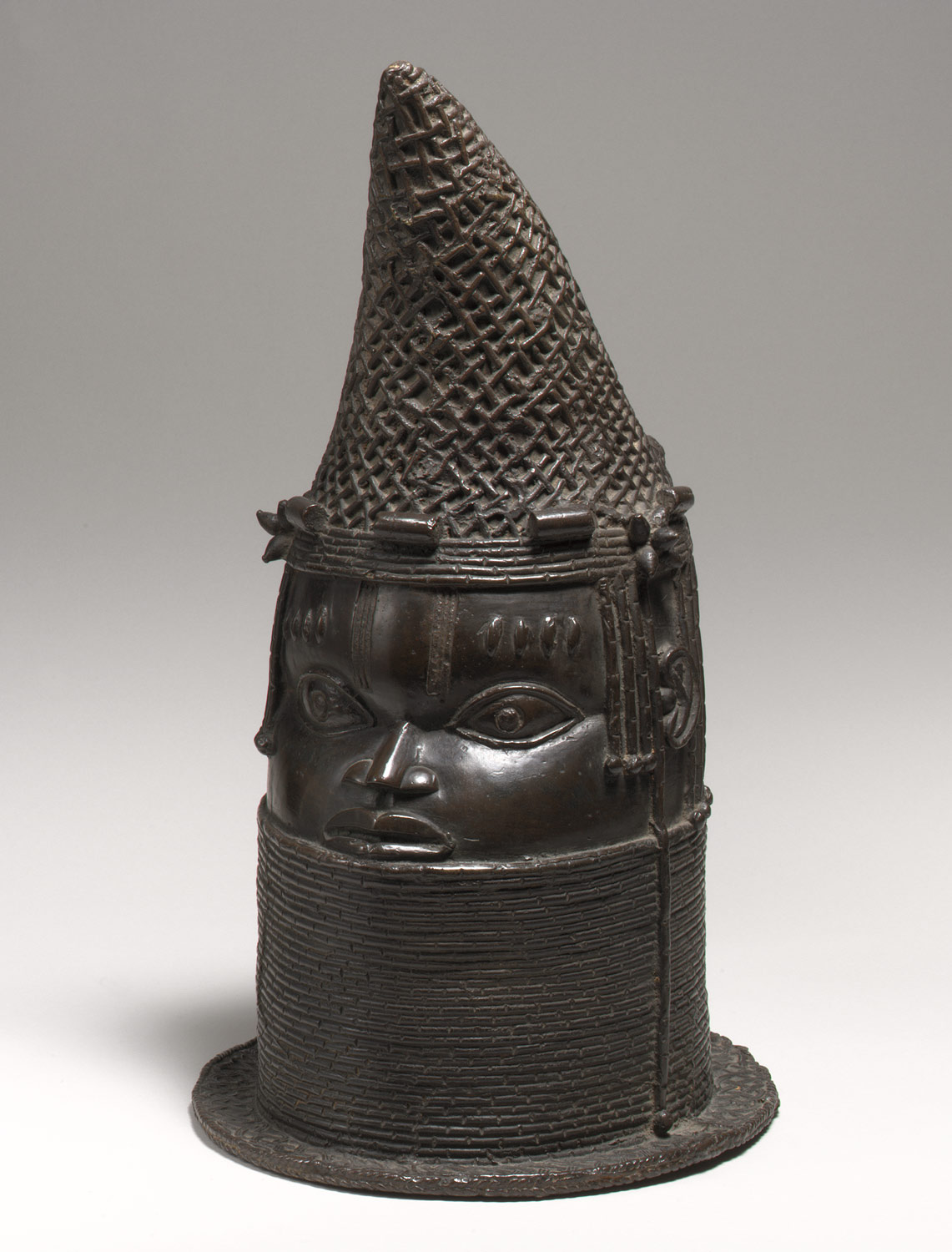 Head of a Queen Mother (Iyoba), 1750–1800 Nigeria; Edo peoples, court of Benin Brass H. 16 3/4 in. (42.54 cm) Bequest of Alice K. Bache, 1977 (1977.187.36) In the Benin kingdom, the iyoba, or mother of the oba (king), occupies an important and historically significant place within Benin's political hierarchy. The title was first conferred upon Idia, the mother of king Esigie, who used her political skill and supernatural abilities to save her son's kingdom from dissolution in the late fifteenth century. Ever since that time, queen mothers have been considered powerful protectors of their sons and, by extension, the kingdom itself. Because of the enormous esteem in which they are held, iyobas enjoy privileges second only to the oba himself, such as a separate palace, a retinue of female attendants, and the right to commission cast brass sculptures for religious or personal use. Ancestral altars dedicated to past iyobas, like those of past kings, are furnished with cast brass commemorative heads. The heads of queen mothers are distinguished from those of kings by the forward-pointing peaks of their coral-beaded crowns. Commemorative heads of iyobas hold to the same stylistic chronology as those of obas. Earlier heads were cast with thinner walls and display tight beaded collars that fit snugly beneath the chin. Later versions have thicker walls, exhibit enlarged cylindrical collars that cover the face up to the lower lip, and are designed with a circular opening behind the peak of the crown to hold a carved ivory tusk. This head of an iyoba dates from the eighteenth century. While its high collar and pierced crown place it with later examples, the sensitive, naturalistic modeling of the face is reminiscent of the earliest commemorative heads. Source: Head of a Queen Mother (Iyoba) [Nigeria; Edo peoples, court of Benin] (1977.187.36) | Heilbrunn Timeline of Art History | The Metropolitan Museum of Art |
| Re: Benin Art And Architecture by PhysicsMHD(m): 3:55am On Jan 16, 2011 |
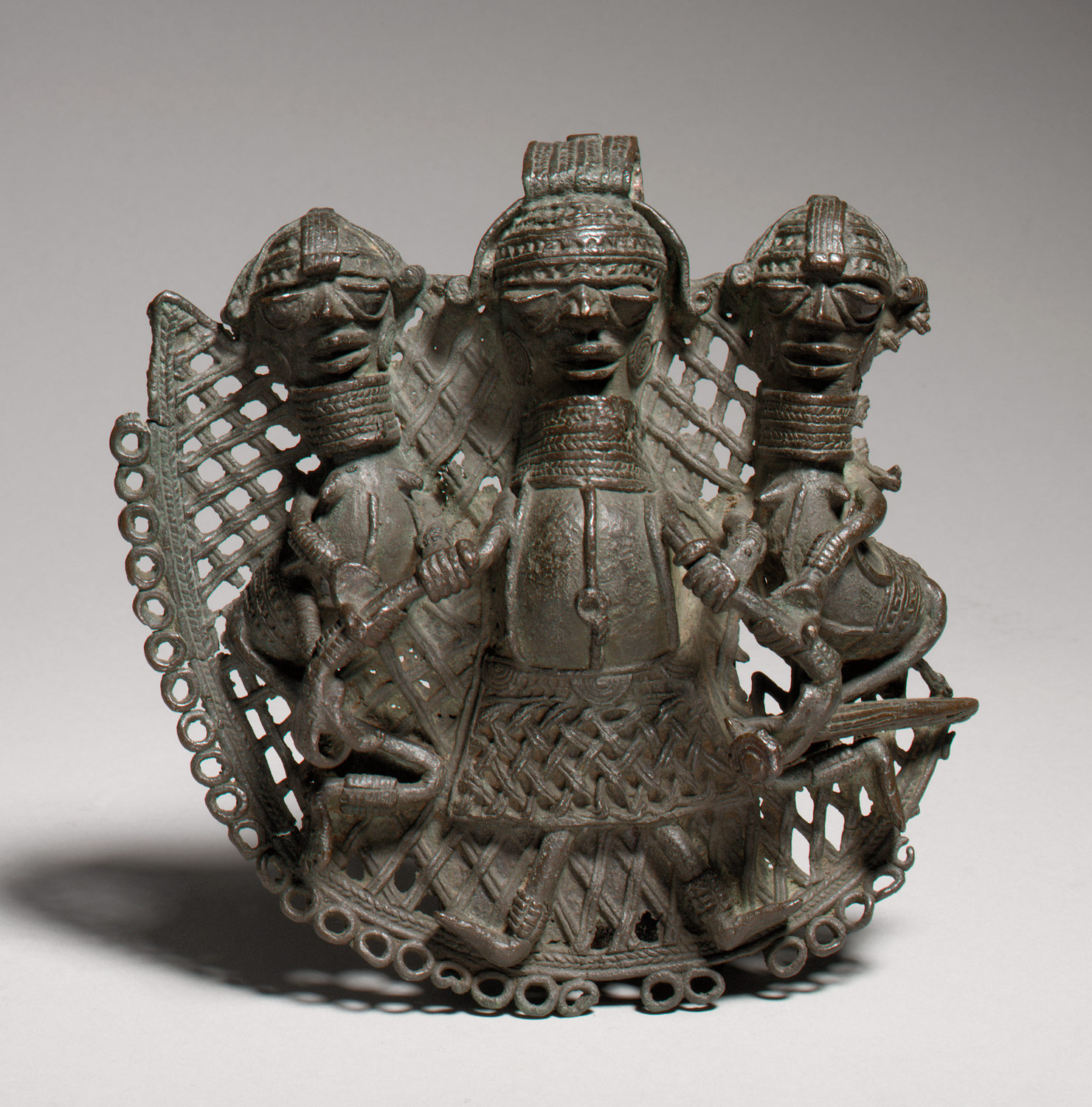 Aegis Pendant, 15th–19th century Nigeria; Benin, Udo (?) Brass H. 6 1/10 in. (15.49 cm) The Michael C. Rockefeller Memorial Collection, Bequest of Nelson A. Rockefeller, 1979 (1979.206.301) This semicircular ornament was likely the property of a provincial chief allied to the Benin kingdom, in what is today southern Nigeria. As the Benin kingdom expanded its territory, it disseminated its courtly traditions among the ethnically diverse peoples who were incorporated into its political structure. Regional rulers frequently appropriated and reconfigured Benin's symbols of power for their own use at the local level. In this example, a standard motif from Benin royal art, a central chief flanked by two attendants who support his arms, has been represented in a distinctive style. This depiction of a leader as he appears in public emphasizes the idea of a ruler's reliance on the support of his subjects. Appearing at a chiefly court far removed from the kingdom of Benin's center, however, the motif may have been adopted as a straightforward symbol of chiefly power demonstrating connections to royal authority. The style of dress is evidently based on costumes from the Benin court, as the chief is depicted wearing an elaborate wrapper, high collar, and headdress reminiscent of those depicted in royal sculpture from the capital. With their willowy arms and legs, bulbous heads, and coffee-bean eyes, however, these figures represent a significant stylistic departure from comparable works created in Benin City, the capital of the kingdom of Benin. Source: Aegis Pendant [Nigeria; Benin, Udo (?)] (1979.206.301) | Heilbrunn Timeline of Art History | The Metropolitan Museum of Art |
| Re: Benin Art And Architecture by PhysicsMHD(m): 3:59am On Jan 16, 2011 |
[img]http://www.metmuseum.org/toah/images/hb/hb_1991.17.113,1996.11.jpg[/img] [img]http://www.metmuseum.org/toah/images/hb/hb_1991.17.113,1996.11_av1.jpg[/img] [img]http://www.metmuseum.org/toah/images/hb/hb_1991.17.113,1996.11_av2.jpg[/img] [img]http://www.metmuseum.org/toah/images/hb/hb_1991.17.113,1996.11_av3.jpg[/img] Oba with Animals, 18th–19th century Nigeria; Edo peoples, court of Benin Brass H. 4 7/8 in. (12.38 cm) Gift of Mr. and Mrs. Klaus G. Perls, 1991 (1991.17.113) Altar to the Hand (Ikegobo) of Ezomo Ehenua, 18th–19th century Nigeria; Edo peoples; court of Benin Brass H. 13 in. (33.02 cm) Rogers Fund, 1996 (1996.11) In the kingdom of Benin, ikegobo, or "altars to the hand," celebrate the accomplishments of exceptional individuals. The hand is associated with action and productivity, and is considered the source of wealth, status, and success for all those who depend on manual skill and physical strength. Altars of this kind are commissioned in terracotta, wood, or brass, depending on the status of the patron. This ikegobo is an important historical document associated with the reign of Akenzua I. In the early eighteenth century, rebellious chiefs challenged Akenzua's leadership and threatened the unity and stability of the kingdom. Ehenua, Akenzua's ezomo or military commander, played a central role in defeating these forces and restoring order to the kingdom. In recognition of his heroism and service, Akenzua presented Ehenua with an ikegobo illustrating his military triumph. The artist who created this work, composed of a series of units, used costume, scale, and composition to denote the relative status of the figures depicted on the frieze. A monumental image of Ehenua, dressed in full military regalia and clutching trophies of war, appears at the center of a group of diminutive soldiers, attendants, and priests. Two rows of musketeers above the frieze include Portuguese soldiers, an indication of the degree to which European powers were engaged in the support of Benin's leadership at this time. A separately cast sculptural group sitting in front of these soldiers portrays Oba Akenzua in the act of performing sacrifices to his ancestors so that Ehenua will prevail and triumph over his adversaries. Finally, a carved ivory tusk, now missing, was fitted onto the brass peg between the soldiers. While most Benin art left the kingdom as a result of the British Punitive Expedition of 1897, Ehenua's ikegobo remained in Benin in the possession of his descendants, who inherited the ezomo title. Its regular use across generations is a testament to its continued relevance and vitality. Source: Oba with Animals, Altar to the Hand (Ikegobo) of Ezomo Ehenua [Nigeria; Edo peoples, court of Benin] (1991.17.113,1996.11) | Heilbrunn Timeline of Art History | The Metropolitan Museum of Art |
| Re: Benin Art And Architecture by PhysicsMHD(m): 4:07am On Jan 16, 2011 |
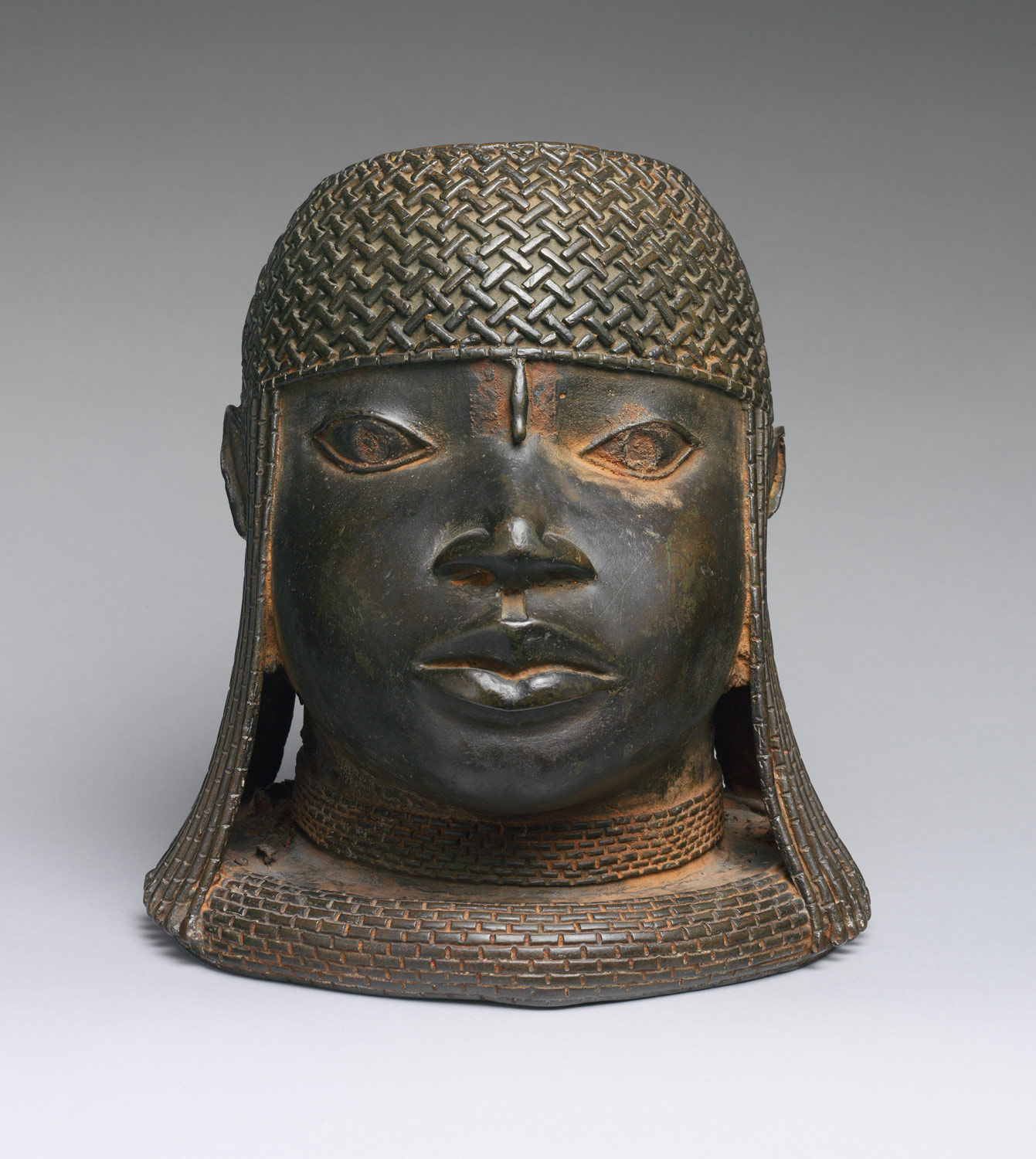 Head of an Oba, 16th century (ca. 1550) Nigeria; Edo peoples, court of Benin Brass H. 9 1/4 in. (23.5 cm) The Michael C. Rockefeller Memorial Collection, Bequest of Nelson A. Rockefeller, 1979 (1979.206.86) The leaders of the kingdom of Benin in present-day Nigeria trace their origins to a ruling dynasty that began in the fourteenth century. The title of "oba," or king, is passed on to the firstborn son of each successive king of Benin at the time of his death. The first obligation of each new king during this transition of rule is to commemorate his father with a portrait cast in bronze and placed on an altar at the palace. The altar constitutes an important site of palace ritual and is understood to be a means of incorporating the ongoing influence of past kings in the affairs of their descendents. Though associated with individuals, this highly stylized genre of commemorative portraiture emphasized the trappings and regalia of kingship rather than specific facial features. In the Edo world view, the head is considered the locus of a man's knowledge, authority, success, and family leadership. The burden of providing for his family and seeing them through times of trouble is often described as being "on his head." The oba is often called by his praise name "Great Head," accentuating the head of the living leader as the locus of responsibility over and for the Benin kingdom. The idealized naturalism of this work reflects conventions of depicting the king at the prime of his life. The straightforward gazing eyes, which would have included iron inlays, possess the ability to see into the other world, communicating the divine power of the oba to survey his kingdom. The beaded headdress and collar are depictions of the king's coral regalia. Coral is of particular importance to the Edo because of its associations with the ancestral realms of the sea and to the immense wealth of the oba gained through ocean-going trade with Europe. The relatively minimal amount of brass used to make this light cast and the proportionately small amount of regalia depicted indicate that the head was created during the earlier half of the sixteenth century. Art historians have suggested that over the centuries, as greater quantities of brass became available, casters had less incentive to be economical with the material, and the trappings of office worn by the kings of Benin became more ostentatious. Source: Head of an Oba [Nigeria; Edo peoples, court of Benin] (1979.206.86) | Heilbrunn Timeline of Art History | The Metropolitan Museum of Art ^^^^^^^^ Although this piece erroneously claims the present dynasty started in the 14th century, the rest is accurate. |
| Re: Benin Art And Architecture by PhysicsMHD(m): 4:08am On Jan 16, 2011 |
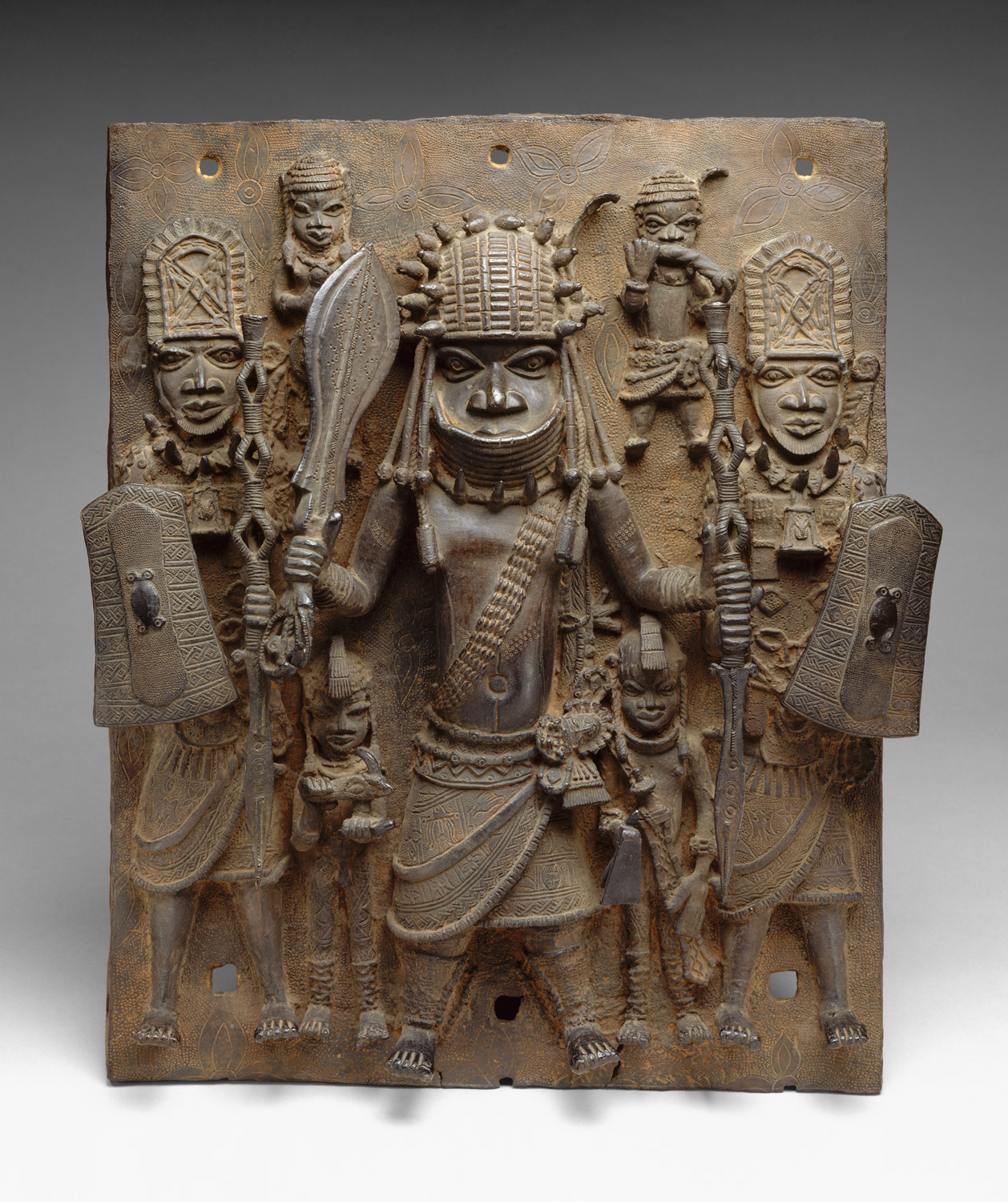 Plaque: Warrior and Attendants, 16th–17th century Nigeria; Edo peoples, Court of Benin Brass H. 18 3/4 in. (47.6 cm) Gift of Mr. and Mrs. Klaus G. Perls, 1990 (1990.332) During the sixteenth and seventeenth centuries, a remarkable series of works were created to adorn the exterior of the royal palace in Benin City. A seventeenth-century Dutch visitor to the court of Benin, Olfert Dapper, described the sprawling palace complex—with its many large courtyards and galleries—as containing wooden pillars covered from top to bottom with rectangular cast brass plaques. These plaques are understood to have autonomous meaning and to tell complex narratives in relationship to one another. At some point the plaques were removed from the palace facade, as they were no longer there when the British arrived in the region. One scholar has surmised that they "were kept like a card index up to the time of the Punitive Expedition, and referred to when there was a dispute about courtly etiquette." The authors of such works were far more concerned with the communication of hierarchies and status than in capturing individual physical features. These plaques conform to a convention of "hierarchical proportions" wherein the largest figure is the one with the greatest authority and rank. In this example, it is a warrior chief. He is in the center, flanked on either side by soldiers of lesser rank. Regalia and symbols of status are emphasized above all other aspects of the subject depicted. For example, the warrior is shown with leopard-spot scarification marks and a leopard-tooth necklace, which associate him with the stealth, speed, and ferocity of the leopard. As "king of the bush," the leopard is one of the principle symbols of Benin kingship. Additionally, the warrior chief wears a coral-studded helmet and collar, a lavish wrap, and a brass ornament on his hip. In his left hand he carries a ceremonial sword, a gesture of honor and loyalty, and holds a spear in his other hand. The servile status of the figures flanking the warrior chief is indicated by the objects they carry. One attendant has a fan used to cool the warrior chief, the other a trumpet to announce his presence. A third attendant brings a box containing an offering of kola nuts for the oba (king). Source: Plaque: Warrior and Attendants [Nigeria; Edo peoples, court of Benin] (1990.332) | Heilbrunn Timeline of Art History | The Metropolitan Museum of Art |
| Re: Benin Art And Architecture by PhysicsMHD(m): 4:09am On Jan 16, 2011 |
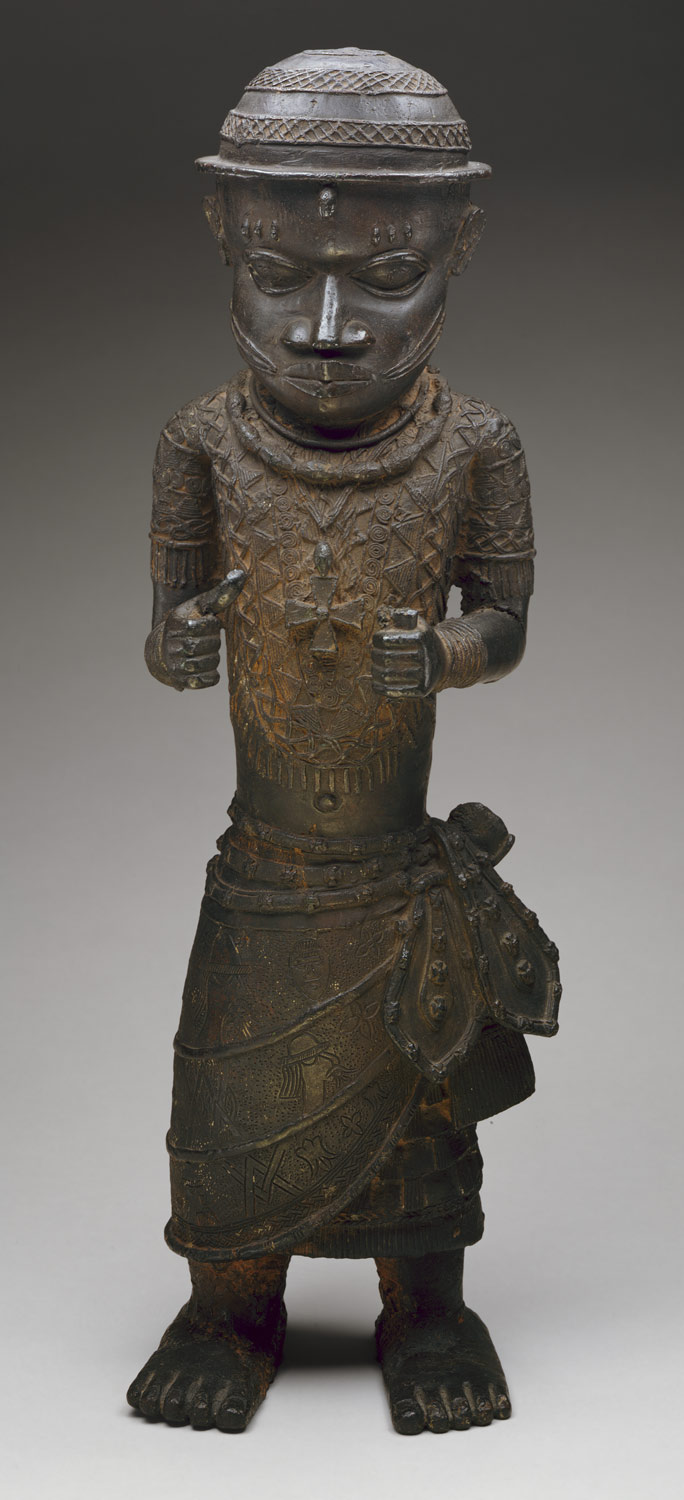 Standing Male Official: Court Official, 16th–17th century Nigeria; Edo peoples, court of Benin Brass H. 25 3/4 in. (65.4 cm) Gift of Mr. and Mrs. Klaus G. Perls, 1991 (1991.17.32) The Punitive Expedition of 1897 led to the loss of contextual information about Benin works of art. Therefore, scholars attempt to reconstruct Benin art-historical chronologies and lineages utilizing a combination of written documents, oral histories, and analysis of physical attributes in the sculptures themselves. Scholars have suggested that this figure was placed upon a commemorative altar dedicated to a king of Benin. The figure is depicted wearing a distinctive cross pendant. His wrap skirt is adorned with profile heads of Portuguese traders, a frontal African head, and other common Benin motifs such as river leaves, mudfish, and interlace patterns. Three different identities have been suggested for this figure. The official may be a messenger from a ruler referred to as the Ogane, who today is identified as the leader, or Oni, of Ife. The present Benin dynasty claims descent from the Yoruba kingdom of Ife. According to a sixteenth-century Portuguese text, each new oba, or king, of Benin had to be confirmed by the Ogane, whose messenger presented the oba with a brass hat, staff, and cross necklace. Another interpretation suggests that he may represent a priest of Osanobua, the Benin creator god, who also wears a cross. Finally, the figure may depict a member of Ewua, a group of palace officials who wake the oba each morning and perform a ceremony recalling the origin of the Benin dynasty. Source: Standing Male Official: Court Official [Nigeria; Edo peoples, court of Benin] (1991.17.32) | Heilbrunn Timeline of Art History | The Metropolitan Museum of Art |
| Re: Benin Art And Architecture by PhysicsMHD(m): 4:10am On Jan 16, 2011 |
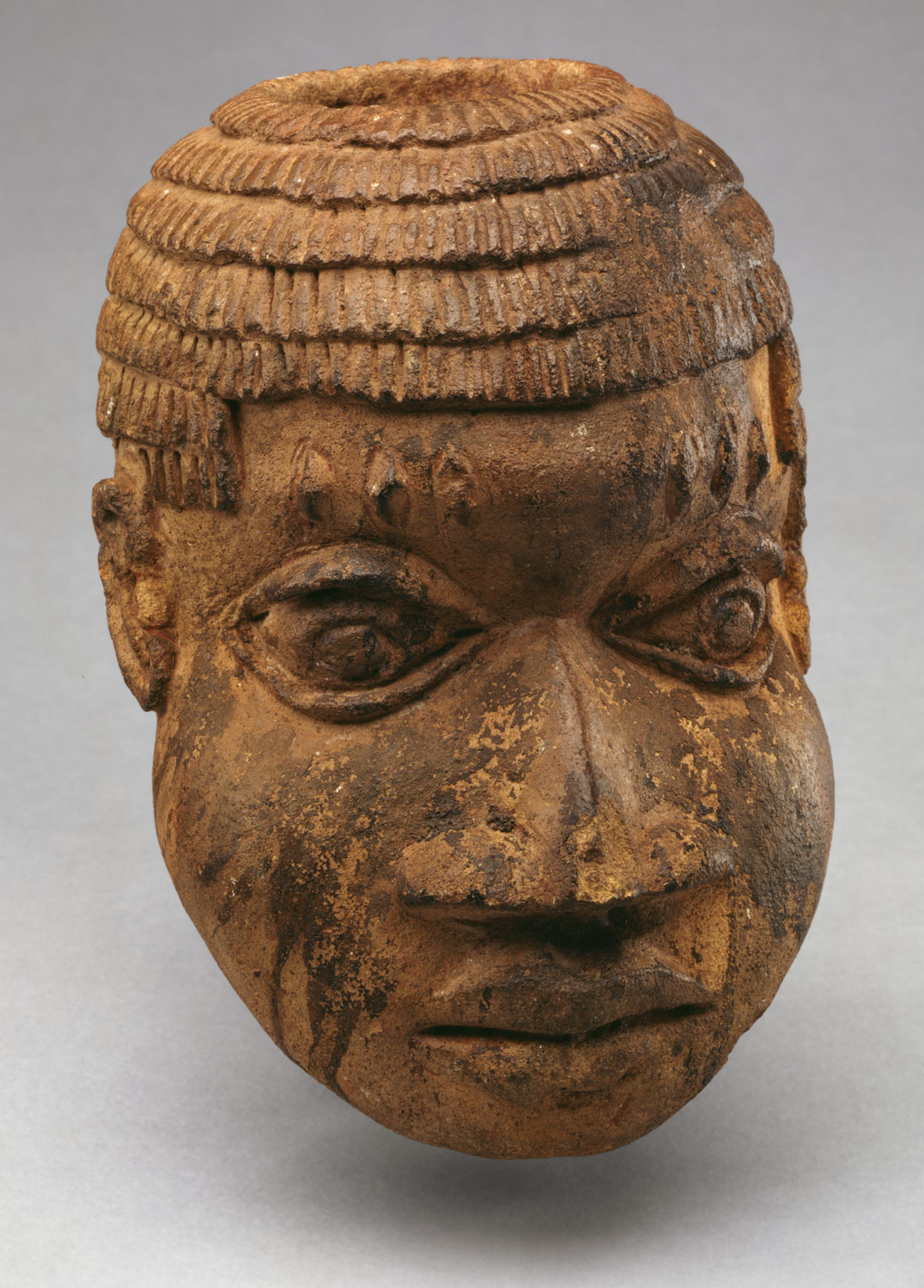 Head, 16th–17th century Nigeria; Edo peoples, court of Benin Terracotta, sacrificial materials H. 6 1/2 in. (16.5 cm) Gift of Mr. and Mrs. Klaus G. Perls, 1991 (1991.17.7) This Benin terracotta head, with its full rounded cheeks and eyes, neatly arranged rows of hair, and series of three parallel scarification marks above each eye, is a commemorative depiction. Oral histories recount that the earliest such works were primarily associated with the ancestral altars of the first kings of Benin. However, over time, royal altars came to feature works in the more prestigious material of brass. In contemporary Edo society, terracotta heads are located on the ancestral altars of the brass casters' guild and are believed to memorialize Benin brass casters. Historically, the extent of the use of terracotta may have been more widespread. Edo terracotta heads differ from comparable works cast in brass in their greater simplicity, both stylistically and in the incorporation of less regalia. Generally, they are less delicate or refined, with thicker, fuller facial features, and reflect the relative speed with which they were made. It has also been suggested that the king's coral regalia might have been stored on terracotta heads, or that they were used as molds from which to cast brass heads. Source: Head [Nigeria; Edo peoples, court of Benin] (1991.17.7) | Heilbrunn Timeline of Art History | The Metropolitan Museum of Art |
| Re: Benin Art And Architecture by PhysicsMHD(m): 4:30am On Jan 16, 2011 |
[img]http://wapedia.mobi/thumb/9ac5499/en/max/470/720/Beninweapons.jpg?format=jpg%2Cpng%2Cgif[/img] 270×304 Smithsonian Institution: National Museum of African Art Tour Highlights: Ancient African Kingdoms Plaque, Edo Peoples, Copper Alloy 82-5-3 |
| Re: Benin Art And Architecture by PhysicsMHD(m): 4:37am On Jan 16, 2011 |
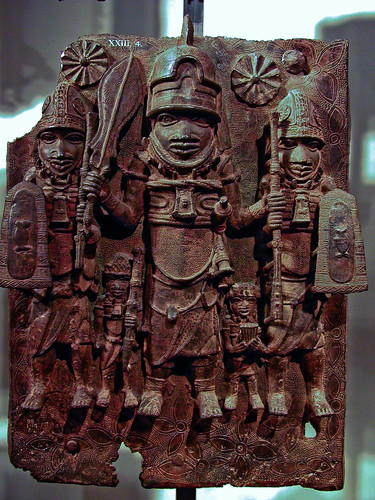 |
| Re: Benin Art And Architecture by PhysicsMHD(m): 4:37am On Jan 16, 2011 |
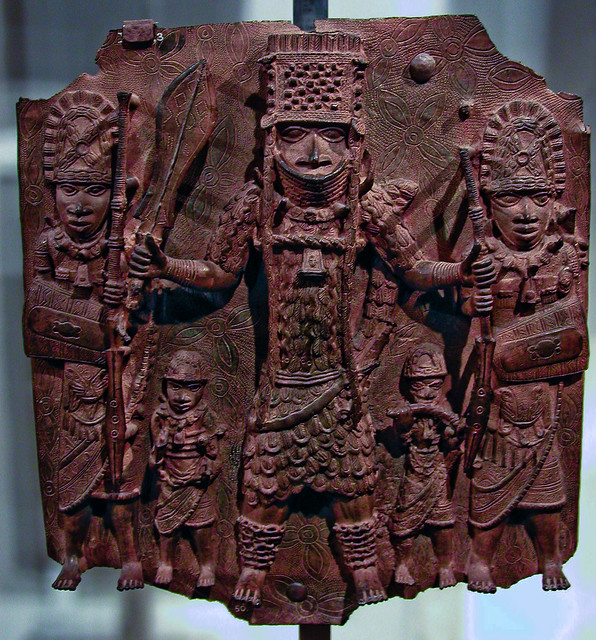 |
| Re: Benin Art And Architecture by PhysicsMHD(m): 4:38am On Jan 16, 2011 |
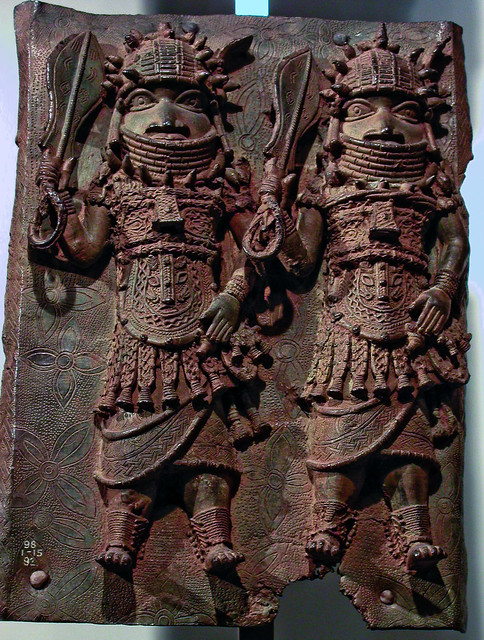 |
| Re: Benin Art And Architecture by PhysicsMHD(m): 4:40am On Jan 16, 2011 |
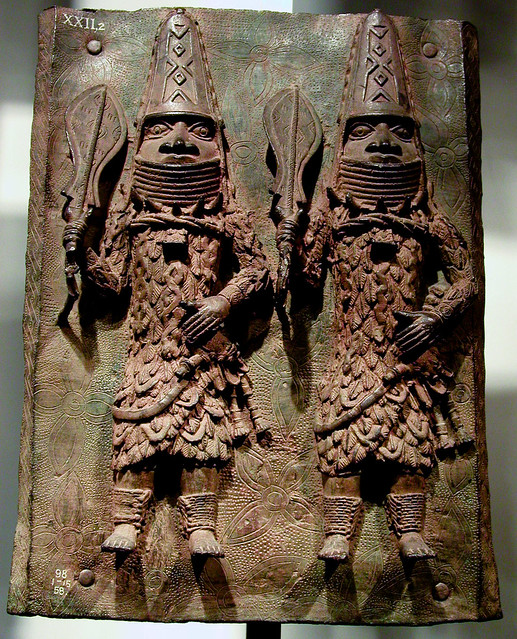 |
| Re: Benin Art And Architecture by PhysicsMHD(m): 4:41am On Jan 16, 2011 |
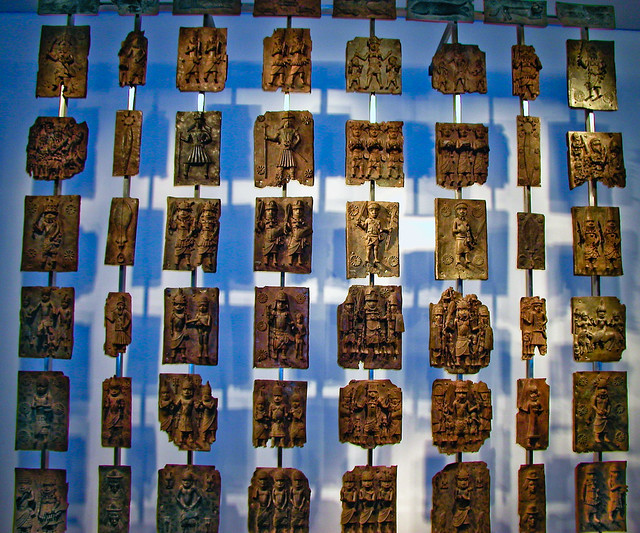 |
| Re: Benin Art And Architecture by amazonia(m): 6:38am On Jan 16, 2011 |
@op, Thanks for sharing. @ Akhenaten, These are yours, mine, and everyone of us inherited legacies of our ancestors. It should inspire us all today to do more in our time, to make the future comers proud of our time.This is not just Bini/Edo/Nigeria heritage, it is Africa and indeed, world heritage. A gift to the world from our ancestors. |
| Re: Benin Art And Architecture by PhysicsMHD(m): 1:54am On Feb 15, 2011 |
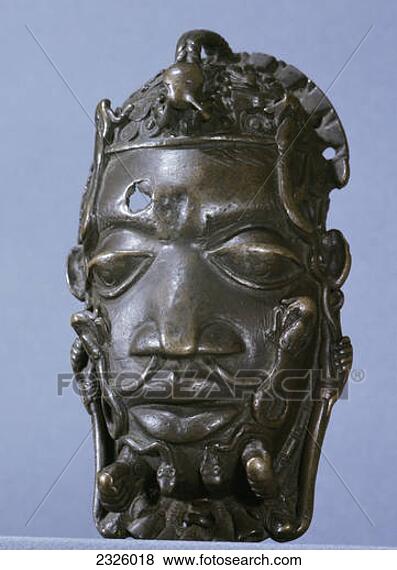 A hip pendant worn in rituals of the Osun cult, Benin, Nigeria, 17th century |
(1) (2) (3) (4) (5) (6) (7) (8) (9) (10) ... (25) (Reply)
20 Popular Yoruba Charms And Their Uses(With Direct English Translations) / HAUSALAND: Teach Me Hausa / Black African Nobility Of Ancient Europe
(Go Up)
| Sections: politics (1) business autos (1) jobs (1) career education (1) romance computers phones travel sports fashion health religion celebs tv-movies music-radio literature webmasters programming techmarket Links: (1) (2) (3) (4) (5) (6) (7) (8) (9) (10) Nairaland - Copyright © 2005 - 2024 Oluwaseun Osewa. All rights reserved. See How To Advertise. 121 |